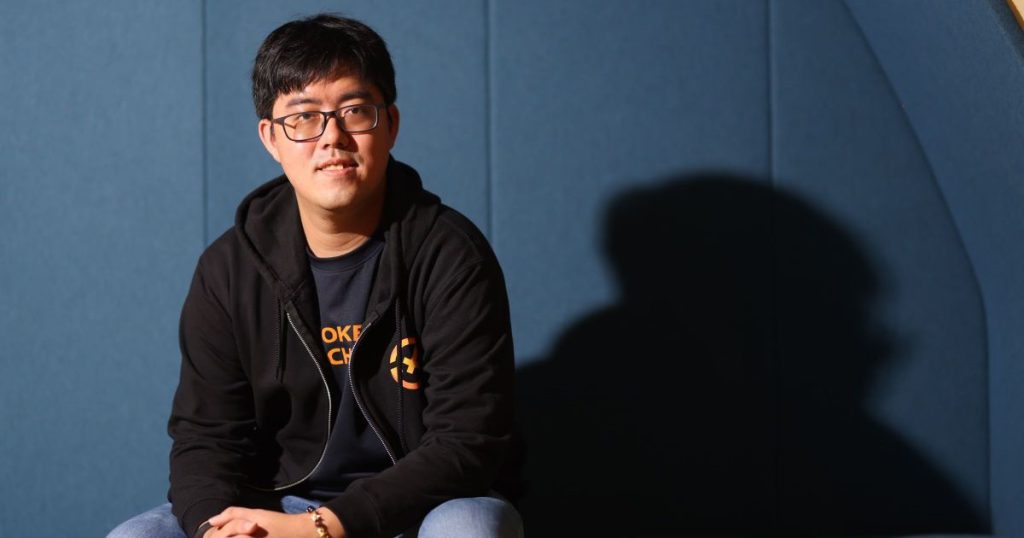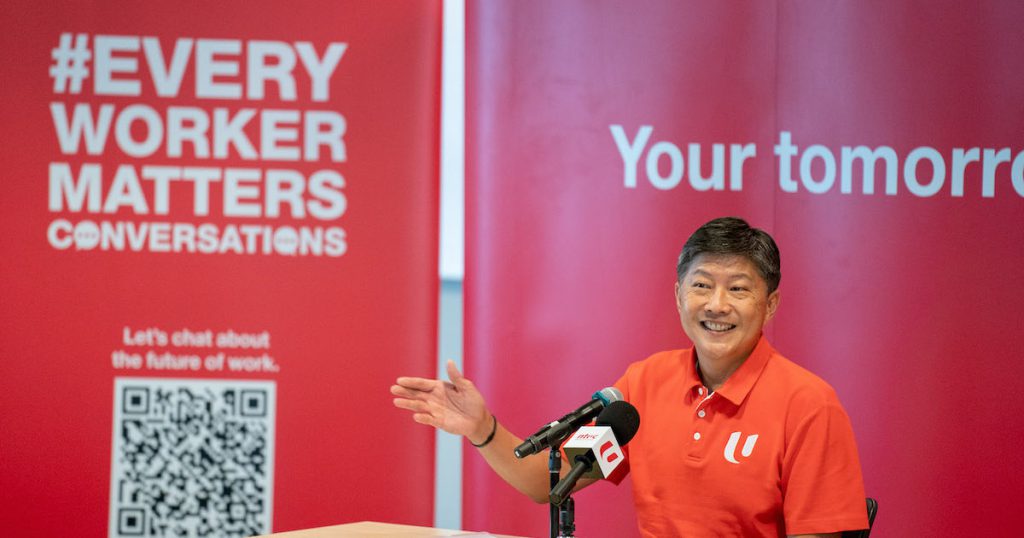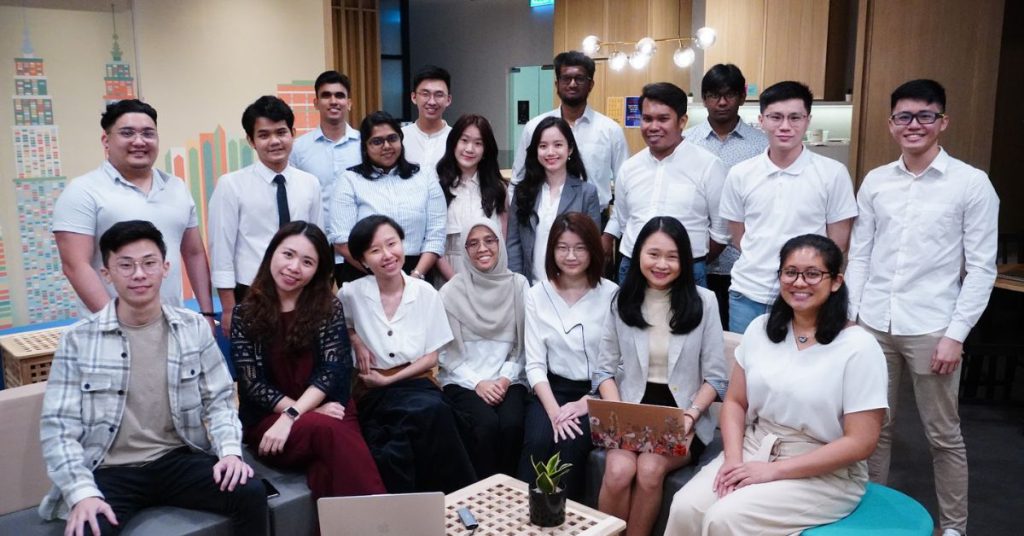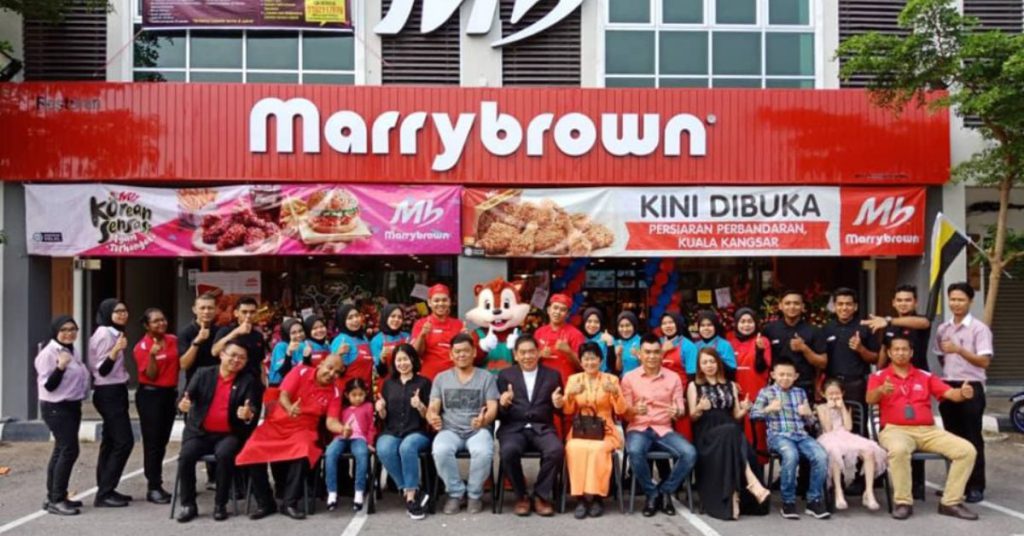Adapt or die: What will happen to petrol stations once EV adoption is in full swing in S’pore?

Out of around 180 petrol stations in Singapore, only 25 of them offer charging services for electric vehicles (EVs). 21 of these are operated by Shell, which was the first to introduce them back in 2019. The other four belong to Caltex.
Esso — the company which owns a third of all petrol stations in Singapore — hasn’t made a push for EVs just yet, despite running trials in Thailand three years ago. Singapore Petroleum Company (SPC) is in the same boat with its 40 stations too.
As Singapore looks to phase out petrol and diesel vehicles by 2040, it stands to reason what will happen to these stations.
A shift towards EV charging seems to be an obvious option, but there are plenty of factors to consider. The established networks of charging networks — such as BlueSG’s approximate 2,000 points across 200 locations in Singapore — could be tough to compete with.
Along with this, all new buildings with carparks in Singapore are now required to install EV charging points. There are also plans to install such points in almost 2,000 HDB car parks by 2025.
This means that those who have the convenience of charging at home would have little to no reason to visit a petrol station in the future.
The case for obsolescence
In a world of electric cars, petrol stations do not provide any significant benefits or convenience compared to other alternatives.
– Danny Thai, founder of Zecar, an electric car and sustainable energy company
“Electric cars can be charged anywhere [as long as] there is a power point,” Thai continues on the topic of petrol stations losing their value.
He believes that drivers will always opt for convenience, leaving petrol stations without a place in an electric future. This is already visible in countries like Australia, where around 80 per cent of EV drivers charge their cars at home.
Looking beyond home charging, Thai doesn’t think petrol stations would make the second pick either. Even if people don’t have access to chargers at home, they wouldn’t want to waste their time at a petrol station.
“They are likely to prefer charging while running errands as opposed to waiting at a petrol station,” Thai says.
Since it usually takes at least 30 minutes to charge an EV, it’d be a better use of time to charge near a shopping mall or grocery store. In Singapore, malls such as Great World City and Tekka Place have their own fast chargers. These points are operated by SP Group, at almost 30 different locations.

While they may stop being of use within cities, petrol stations could make ideal charging points for longer journeys.
“They are already located in ideal locations for this and will therefore likely still have a role to play.” However, this doesn’t apply to a Singaporean context as much as it does to countries such as Australia and the US, where road trips from city to city are more common.
All things considered, Thai remains skeptical on the utility of petrol stations heading into the future. “Many petrol station companies are aggressively transitioning their stations to incorporate EV charging. Whether these will be profitable in the future remains to be seen.”
The case for transformation
“As electric vehicles see mainstream adoption, petrol stations will have to expand the mission they fulfil for their customer, in order to remain relevant and thrive,” says Abhi Bhuchar, Head of Energy (Asia Pacific), Oliver Wyman.
He offers a different view, focusing instead on a broader scope of adaption. For petrol stations to survive, there’ll be more to do than just installing EV charging points.
“Petrol stations today operate at a low emotion category in consumers’ minds,” Bhuchar says. This means that people aren’t particularly loyal to a particular company when filling up fuel. They’re more likely to pick the station that’s most convenient.
This is one of the problems which needs to be addressed.
The challenge is to shift the engagement to one that is positive or high engagement. To do so, fueling stations need to find ways to integrate themselves into the customer’s ‘new’ daily routine, with formats that seamlessly integrate into various urban contexts.
– Abhi Bhuchar, Head of Energy (Asia Pacific), Oliver Wyman
Petrol stations and convenience stores have gone hand-in-hand for a long time. In order to compete in the electric age, stations will need to expand on this idea even further. Considering factors like location and clientele, they’ll have to curate an offering that goes beyond just being a charging station.

An example of this is Shell’s first all-EV charging hub in the UK. It is made up of nine ultra-rapid charging points, a coffee shop, and a convenience store. Drivers get to enjoy free WiFi and comfortable seating at the coffee shop while waiting for their car to charge.
“We see success especially if [the stations] have different formats to cater to the settings they are in, rather than a cookie cutter approach,” Bhuchar adds. “For example, the offerings within a station — in a residential versus business district — should be adjusted to the different needs of the demographic.”
The aim of this is for the petrol stations to become a place where people come not out of habit, but out of delight.
Both arguments considered, it’d seem petrol stations — at least those in Singapore — are in for an uphill battle. BlueSG can set up charging points near shopping malls, but for Shell to compete, they’ll need to build shopping malls around their charging points.
Also Read: A look at S’pore’s carbon-credit scheme for EVs and how it stands out from global efforts
Tokenize Xchange CEO on becoming “dominant player in Web3 world”, unveils new NFT marketplace

Not many companies can be said to have been completely unaffected by the crypto winter. After all, the crash that began with the fall of Terraform Labs wiped trillions of dollars from the markets.
Even companies that were once hailed as giants in the crypto space have been brought to their knees.
Cryptocurrency exchanges have been one of the few companies that were consistently affected — Celsius all but abandoned its customers to try and save itself, Coinbase slashed its headcount, and even Hodlnaut has halted withdrawals and withdrawn from its application for a Major Payment Institution Licence in Singapore.
When we last checked in, Tokenize Xchange’s CEO Hong Qi Yu was already a crypto millionaire, as he splurges on a new condominium and Tesla car.
And it seems that far from having bad news to share, Tokenize Xchange is actually bringing some good news to the crypto community.
Staying warm during crypto winter
Despite the many companies that have been forced to press pause on hiring, or have even had to lay off employees, Tokenize Xchange has had no such issue. In fact, Hong credits the company’s conservative hiring policy and prudent spending with the company’s present strength and resilience.
The company has even managed to launch its own NFT marketplace, Elemint.
“What inspired us to create Elemint was the challenge of bringing NFT creators and NFT investors together in a single, secure ecosystem with plug and play ease of functionality,” said Hong.
While this idea itself is not the newest in the world, to launch in the peak of the crypto winter is a bold move, to say the least.
But what makes Elemint different is that unlike many other marketplaces, Elemint will feature both on-chain and off-chain elements for everyone.
Elemint seeks to empower NFT project owners and creators with low entry costs and we also want to eliminate the tech barrier to entry too. Project owners may list their NFTs via off-chain protocols and let the buyer foot the bill if they want to bring it on-chain.
– Hong Qi Yu, Tokenize Xchange CEO
In addition, Tokenize Xchange has already onboarded their own version of the Bored Ape Yacht Club NFTs, known as Poker Penguins. The project is an Ethereum-based NFT collection, with a set of 936 digital collectible penguins for minting.

However, the NFTs will also have additional functions, including entitling their owners to perks like coaching for NFT investments, community events, and more.
To add on, the company’s token, TKX also hit a significant milestone in May this year — it hit a market capitalisation of US$1 billion, making it a mid-cap cryptocurrency.
Complying with regulations
With all their progress, however, Tokenize Xchange still does not have a licence from the Monetary Authority of Singapore (MAS) to offer Digital Payment Token services in Singapore.
Instead, the company operates under an exemption, and is still in the process of applying for a Digital Payment Token Licence.

That being said, the company has already obtained full approval from the Securities Commission Malaysia for operations in Malaysia.
Hong also assured that Elemint, as an NFT marketplace headquartered in Singapore, will abide fully by Singapore laws protecting both assets and property.
Our platform has been created on the philosophy of both accountability and professional ethics. By holding ourselves to such high standards, we will ensure that Elemint’s users have a secure, enjoyable, and affordable experience — both buyers and creators included.
– Hong Qi Yu, Tokenize Xchange CEO
In compliance with MAS regulations, the company has begun to shift its focus from retail investors of cryptocurrencies to institutional clients. The number of institutional investors that Tokenize Xchange serves has actually doubled from 40,000 in 2021, to around 87,500 during the first quarter of 2022.
Towards a crypto-powered future

These successes, however, do not mean that Tokenize Xchange is satisfied with staying as it is. The company is actually looking to acquire further funding, and are planning expansions into Indonesia and Australia as well.
“We believe in focusing on our original markets first, so Southeast Asian countries are where we would like to focus our efforts.”
Tokenize Xchange has just secured US$11.5 million in a Series A funding round, and is currently preparing for a Series B funding round next year, where Hong hopes to raise a further US$300 million.
With the crypto winter in full swing, new launches are a rare sight — but for companies like Tokenize Xchange, where careful consideration and precise planning are the norm, it seems that the crypto winter is not necessarily bad news.
In fact, Hong has expressed that he is “excited at the larger talent pool which has now become available”.
Far from faltering at the sight of many giants of the crypto world encountering crises, the company has maintained a steady course, towards better products and offerings for its clients and customers, as well as the expansion of its customer base and business presence around the region.
“Just as Grab is the dominant player in ridesharing and food delivery in the APAC region, Tokenize Xchange wants to become the dominant player in the Web3 World”, envisioned Hong.
Featured Image Credit: Tokenize Xchange
Also Read: Helping hand: Crypto firms like Hodlnaut, Zipmex are in crisis – should central banks step in?
NTUC wants to hear from the working people of S’pore, urges the public to share their concerns

NTUC Secretary-General Ng Chee Meng addressed the media on August 11 in a closed-door interactive session with union leaders to share the launch of #EveryWorkerMatters Conversations, a year-long series of engagements where NTUC will engage workers from different walks of life to understand their needs and concerns.
This will help NTUC better identify how it can co-create the future of work and strengthen the workers compact, in line with the labour union’s long-term plan to tackle the uncertainties facing Singapore and the workforce.
We’ve done many things over the last two years, but we will not rest on our laurels. We’ll take a deeper dive to see how we can champion the interests of our working people. This means all collars — white collar, blue collar — [and regardless if] you’re an employee, freelancer, younger or older, men or women.
– NTUC Secretary-General Ng Chee Meng
Ng acknowledges that Singapore will continue to be tested, especially with the advances in technology and the economic world that will continue to evolve post-Covid.
At the same time, he also recognises the potential of job polarisation, which could potentially widen income inequalities if active measures are not taken to champion the interests of the working people.
How will #EveryWorkerMatters conversations help the workforce?

According to Ng, NTUC’s objective is to further identify with the anxieties and needs of the workforce.
A recent survey it conducted with approximately 1,000 workers saw a rise in concerns: lack of career progression, lack of bargaining power to negotiate for better employment terms, and an overall lack of work-life balance in Singapore.
Singaporean workers want Singapore to remain meritocratic, open, and have responsive measures toward new challenges. #EveryWorkerMatters Conversations seek to engage with them, understand their challenges, and hopefully in time to come, work with employers and the government to put in proposals and concrete measures to forge a new workers compact.
– NTUC Secretary-General Ng Chee Meng
In turn, this exercise also aims to engage with employers, government policymakers and partner organisations, as it listens to the views and aspirations for the social compact around work, including the trade-offs and sacrifices each must make.
Through the conversations, engagements, and workshops, NTUC hopes its autonomous, independent efforts allows them to have a voice to plug into the larger-planned social compact, hence further enabling them to represent workers’ interests in a clearer and more accurate manner.
A three-phase exercise to “enable, assure, and protect” workers

The first phase of #EveryWorkerMatters takes a divergent approach, and will run from now until end-2022. During this period, NTUC will engage the public to hear their views on the compact with workers.
“We’ll hear from many workers in our own networks, going all the way down to the voting grassroots. This will give us a first-hand understanding of some of the issues faced that may not be said so openly,” said Ng.
He adds that different workers have different concerns. For instance, there are women in the workforce who need flexible working arrangements as caregivers. There are also other segments of workers — those with aged parents and young children, senior workers, young workers, as well as the PMEs — that face other host of issues that NTUC might have yet to hear of.
In its second phase starting in 2023, the exercise will move towards a convergent approach. NTUC aims to organise a series of policy workshops with tripartite partners, Institutes of Higher Learning (IHLs), civic society organisations, Human Resource practitioners, and other partner organisations.
This is to crystallise recommendations and concrete suggestions on how the worker’s compact can be strengthened. Ng recognises that this stage brings about a difficult conversation with employer partners worrying about productivity, and on the other hand, workers’ having legitimate concerns about being burnt out from the different duties they have.
We have to bring in the employers and government to see what we can do collectively to answer the issues in the compact workers contract, and ultimately, deliver first-hand feedback to the government on what these important constituents want to see in the future of Singapore.
– NTUC Secretary-General Ng Chee Meng
Finally, NTUC’s third phase for the exercise will encompass looking at surfacing findings from earlier phases and releasing its recommendations by mid-2023. This entails working with 4G leaders and government policymakers through Forward Singapore.
Changing times need us to change how we work for workers
Although upscaling and rescaling in terms of concrete intellectual ideas has been in NTUC’s repertoire for a long time, Ng clarifies that it’s important not only to update policies, but update the way they are implemented.
The union paradigm was formed in the 1800s. In a new world where labour is more mobile, if you really want to answer to the needs of these segments of the workforce, can we still use a paradigm that is a hundred years old and apply it to a platform space today?
– NTUC Secretary-General Ng Chee Meng
Ng also emphasised how NTUC is not looking at a singular method of reaching out to the workforce.
“As long as the method is applicable, we are willing to go with it. If we can engage the youth via TikTok, we will try. Whether it is focus groups, a Saturday morning team building with young SME bosses together with union leaders, or bringing in older workers for an informal chat.”
Over the past two years, it kickstarted the initiative by engaging workers across different sectors. Moving forward in phase one, it is looking to zoom in on other exploration challenges it may face.
By changing the paradigm of what it means to represent workers, Ng hopes that NTUC can bring an overarching effort and move forward as the champion voice of the working people in Singapore.
On August 12, Ng also released a personal letter addressed to all workers in Singapore, capturing his vision of a future that NTUC wants to champion for workers, with workers playing a part too.
He talked about the need for a fairer and more inclusive workforce, with allowance for greater flexibility to balance life’s responsibilities. He also assures that NTUC is working towards a new workers compact – directed by the people – to ensure that the workforce’s needs are addressed accurately.
On that note, he strongly encourages workers of all ages to engage in the #EveryWorkerMatters Conversations to help NTUC better understand how it can best protect and upskill the workforce.
NTUC is committed to starting a conversation that kick starts a better future for you, in order to promote a future in which every one has a job they can be proud of, and ultimately a future of better jobs and better lives. Reach out to NTUC to share your workplace concerns and feedback here.
This article was written in collaboration with NTUC.
Featured Image Credit: NTUC
Also Read: Forward Singapore: DPM Wong lays out future roadmap, stresses need to refresh “social compact”
I’m a Gen Z who’s terrified of Vtubers. So, my editor made me watch them for 2 weeks.

I remember a time when it would take me three hours to learn Step 4 of How To Solve A Rubix Cube from a 12-minute YouTube clip which buffered for a lifetime.
Streaming was in its infancy, and Annoying Orange was the most hilarious entertainment to my unrefined, 10-year-old taste. Remember that?
(My 20-year-old colleague, Claudia, who sits beside me doesn’t.)
Now, here I am, 25 years old and trying to comprehend the absurdity of the latest fad taking over the world:
Vtubers
Two weeks ago, a confused me tried to decode the term. “Vlogger-YouTubers?”, I meekly threw out. No, virtual YouTubers, my colleagues corrected.
These entertainers use animated avatars in their videos, rather than their physical likeness. Like most vloggers, they talk to the camera and share their thoughts on a wide range of topics, from gaming streams to reaction videos and product reviews.

Characters are generated using computer graphics, often controlled anonymously using motion capture and other VR and AR technologies.
Vtubers adopt mannerisms to fit the backstory of their character, and just when you’ve thought you’ve seen it all, you’d see one claiming to be a dragon and another calling themselves Satan.
In 2016, the Japanese-developed Kizuna AI debuted on YouTube and coined the term Vtuber. Within 10 months, she amassed over two million subscribers.
It paved the way for what has since exploded in popularity with over 10,000 Vtubers across the globe, amassing over 1.5 billion views per month by the tail end of 2020.
Top content creators even earn millions for what they do. Take Vtuber Kiryu Coco, for example, who earns up to US$134,000 per month.

Even in Malaysia, we have our own Vtuber agency in the form of Projek Hikayat and MyHolo TV which seemingly have intentions of working with advertising and events companies to drive traffic and engagement.
Vtubers are not inherently bad. In fact, so many of them are extremely skilled with natural-born talents that can captivate audiences.
They can sing, play instruments, and are genuinely high-performing gamers which makes them famous for a reason. But, I don’t get the appeal on a personal level.
Are they trying to sound like mice?
Something I could not tolerate about Vtubers is how many of them were likened to anime-style avatars with large eyes, small mouths, brilliant hair colours, and not to mention, large… bossoms (see above).
Let’s not forget the squeaky, high-pitched baby voice that made me want to rip my ears out. It’s the main reason I avoid watching anime in the first place.

These waifu-like character traits have been deemed by many online as “cute” or “sexy”. To each their own I guess, but it makes me uncomfortable, and I can’t help but feel disgusted with the content. (Plus, they scream a lot for some reason. Why?)
Of course, there are more digestible Vtubers out there. Mainly those that actually use their own human voice.
Along my quest of researching and consuming Vtuber content, it dawned on me that I’ve actually been following and enjoying videos from one of them for a while now.
Described as a pyramid against pyramid schemes, this Vtuber takes on the likeness of an Illuminati symbol and discusses how bad businesses go to die, amongst other things.

It goes to show that there’s something out there for everyone on the internet, and you can’t throw a blanket statement on Vtubers.
Anything can be a Vtuber, a gun, a lamp, heck, one can argue that Annoying Orange was the OG virtual YouTuber on the interwebs.

Why do they do this?
Ultimately, Vtubers are content creators expressing themselves on the internet using an avatar with the help of motion capture tech, and speech-to-text-to-speech voice-altering software (sometimes).
They may hide behind a different persona for various reasons, but the bigger one most Vtubers cite is the security and privacy this form of vlogging facilitates.
Vtubing is a unique creative outlet these individuals may otherwise not be exposed to due to anxiety, disabilities, or other reasons.
One Vtuber even spoke out about her personal health condition from a compromised immune system. Her sickness led to a point where human interactions were limited, and she was lonely while stuck in isolation.

“Since I started Vtubing, it brought meaning back to my life again, and I felt human for the first time,” said Ironmouse in an interview with Anthony Padilla. “I feel like I’m finally allowing myself to feel happy and be excited about life because it was really rough.”
For audiences, they’re presented with a form of escapism, and looking at the state of the world right now, it’s no wonder people are appealed to by these characters.
Vtubing in itself provides immense control, freedom, and income stream to creators, and allows them to produce content in whatever way they want (as long as it’s within their agency’s regulations, for those who are part of a group).
The fact that they have a following any up-and-coming creator would be envious of is telling of their success in capturing their own set of fans.
So, maybe, just maybe, I need to be the one who embraces this form of content delivery and keeps up with the times. But my god, I’m still terrified.
- Read other entertainment-related articles we’ve featured here.
Also Read: We sat down with our parents and asked what their greatest fears as a parent are
Featured Image Credit: Kizuna AI / Zentreya / Ironmouse / kuzuha blood pack / Inugami Korone
Education isn’t one size fits all, this M’sian site tailors English lessons for rural kids

Besides school, tuition has been known to provide a solid foundation for students to continue learning.
The objective of tutoring sessions is to dive deep into the root cause of a problem through targeted questions and tasks that may not necessarily be provided to students in a classroom.
Co-founders, Kai Song and Vicky of GuruLab are in support of this notion. GuruLab is an online learning platform that focuses on leveraging technology to collect data on students’ performances, analyse them, and provide targeted intervention.
Through technology, the co-founders hope to bridge the learning gap between rural and urban students.

It’s long been said to be a tough task, but they’re optimistic about change. “The possibility of filling the education gap in the future is attainable with mobile devices and other readily available learning gadgets,” shared Kai Song.
Though the majority of their students are currently from the Klang Valley, the team are always on the lookout for new ways to further expand GuruLab across the country.
Transforming the one-size-fits-all approach
“When I was 18, I mobilised 200 youths and founded my first non-profit education to help underprivileged communities access tertiary education,” Kai Song told Vulcan Post.
After personally witnessing the impact of good education on one’s life trajectory, Kai Song knew that she would eventually contribute to the education landscape.
She first graduated with a Masters in Information Engineering at Cambridge University with a Machine Learning focus.
Then she decided to move back to Malaysia when she saw the opportunity to use data science to reinforce learning within the Malaysian education system.
Since then, she has gained the technical foundation in transforming the traditional “one-size-fits-all” approach to education with data-driven strategies.
Vicky on the other hand discovered her passion for teaching while taking a gap year. “It became apparent that students with good English skills typically tend to do better in school and can easily apply for university admissions and scholarships,” she described.
Learning English can be extremely challenging for students who have difficulty connecting simple sentences without making grammatical mistakes.
Hence, Vicky’s mission is to make the experience more engaging and effective for students.
That calling was cemented when she pursued a Masters in Education from the University of Oxford. However, instead of continuing her journey as a teacher, she chose to start an EdTech company because she believes that’s how she can create a greater impact using technology.
“When I founded Veritas Academy, I discovered that the best technique is to provide detailed feedback to students and monitor their progress in key areas over time to tailor my lessons accordingly,” said Vicky.
Within time, her students made tremendous progress as a result of personalised training. Thus, GuruLab was founded with the same purpose, to personalise English learning for everyone.
To be a guru
“We are building towards a data analytics platform that can run the GuruLab methodology more and more intelligently every day,” Kai Song said.
The platform’s methods of personalisation include aligning the English curriculum to The Common European Framework of Reference for Languages (CEFR) standards.
This enables students from different school curriculums and examination bodies to supplement their formal language education with GuruLab.
Furthermore, when students are registered with GuruLab and after taking a placement test, they are placed in the right class that suits their current proficiency and maturity levels.
Moreover, the tutors at GuruLab are often subjected to a strict screening process before they are qualified to be a part of the team.

The tutors are required to at least hold a degree in English or Education and a minimum English proficiency of CEFR C2/IELTS Band 8.5.
“Our tutors must be equipped with critical and problem-solving skills in order to conduct a classroom with learners of unique needs,” added Kai Song.
In addition to that, the co-founders ensure that their tutors’ core motives are aligned with the company’s ideology. They should also be capable of delivering compelling and effective lessons according to the GuruLab methodology.
When conducting classes, tutors need to understand what the students can actually comprehend and what they can’t.
Then they can provide targeted feedback for each student to correct their understanding and give them customised practices to work on.
“At GuruLab, we track things like assignment scores and school results to identify improvements in key skills such as writing and speaking,” explained Kai Song.
The team strongly believes that the more invested students are in their learning, the more benefits they can reap.
For instance, they track how “invested” students are in their learning and how often they complete assignments or challenges.

Technology at its best
Students are often placed in smaller groups as they are always involved in presentations, role-play and other speaking activities that require them to interact with each other.
“This would encourage students with low self-esteem to communicate with one another and improve their English speaking skills,” shared Kai Song.
Moreover, online lessons can be proven more effective than lessons in physical classrooms when the tutors know exactly how to leverage EdTech tools.
“For instance, when students are taught how to write an essay on the benefits of space exploration, the online tutor can bring them on a journey to outer space by visiting websites with virtual reality experiences,” shared Kai Song.
Interestingly, the team is currently collaborating with Maxis eKelas (a non-profit initiative) in which they are planning and curating writing workshops. This is to help marginalised students improve their proficiency.
Moving forward, GuruLab will continue building its methodology in terms of content, teaching style, student engagement, and technology to support all that.
“We believe this in itself can open up opportunities to our students and improve their quality of life both directly and indirectly. This already solves some other modern-day issues that we seem to experience in Malaysia,” summed up Kai Song.
Also Read: We sat down with our parents and asked what their greatest fears as a parent are
Featured Image Credit: GuruLab
Marrybrown began with a Johor couple’s love for local food, and grew to 500 global stores

Marrybrown is that one fast food chain that has always been ambiguous to me: Is it Malaysian? Between KFC, A&W, McDonald’s, and more, where does its fried chicken and burgers actually rank?
I’ve only spotted it a couple of times when out and about too, which tells me it either isn’t in very frequented places, or that, while it is, it’s forgettable enough.
However, upon digging deeper into their history, I learnt that there’s quite a bit to be proud of when it comes to their achievements, not just locally, but also internationally.
The start of something new
Founded in 1981, Marrybrown was conceptualised by a Chinese couple, Dato Lawrence Liew and Datin Nancy Liew. They opened their first outlet at Wong Ah Fook Street, Johor Bahru. (Based on research, it seems that this store no longer exists.)
At the same time, American fast food chains were dominating the industry. Hence, Marrybrown was making a name for itself by carving its own destiny in Malaysia.
As of June 2021, Marrybrown had expanded itself to 198 local outlets and 500 international outlets across 16 countries.

“Despite other brands being in Malaysia for so long, there was still an opportunity as many Malaysians were constantly looking for halal western food,” Joshua, the couple’s son, told FMT.
Coupled with their love for Malaysian food, the founders were all the more motivated to dive head-first into the fast food industry.
Marrybrown’s menu consists of burgers, fried chicken, local delights, fish-based meals, kiddy meals, nasi bowls, beverages, desserts, and more. Nothing out of the ordinary for fast-food places, but what made it unique was its proudly Malaysian roots.

As Joshua put it, “Being a homegrown brand, we had the upper hand of having an innate knowledge and understanding of Malaysians’ taste buds—their preferred flavours, likings, dislikes, and so on.”
In 2013, The Star reported that Marybrown’s recipes stand out from other fast food restaurants because they incorporate Asian culinary traditions into the curation of their menu.
These include offering more elaborate forms of spices, a variety of rice delicacies, and a tastier halal menu.

Additionally, just as there is a first time for everything, the fast food chain has had a number of industry “firsts” since the inception of its first outlet. As reported in the same The Star article, Marrybrown was the first to:
- Introduce rice products to their menu (1999);
- Launch porridges (1998);
- Offer mineral water as a soda alternative (2000); and
- Develop ball pit playland (2003).
Marrybrown’s journey
It has been 41 years since the fast food chain first started operations, and while it may not be as omnipresent as other fast-food chains like KFC and McDonald’s, it’s still got a pretty solid following.
That is, if its international presence is of anything to go by. As of today, Marrybrown has steadily made its way beyond Malaysia, spreading into much of the Asian continent, even reaching Tanzania and Sweden (though this particular outlet later shut down).
Recently, in January 2022, Marrybrown drew a mural at its latest outlet at one of Malaysia’s tourist attractions.
This drawing is at The Red House along Johor Bahru’s Jalan Tan Hiok Nee. Done in collaboration with local mural artist Sam Lim, the mural aims to galvanise the cultural building and focuses on the theme “Around the World”.

It represents a train carrying Marrybrown’s dishes to Malaysians nationwide and global fans, introducing local Malaysian delicacies to individuals across the globe.
This isn’t just for marketing either; they actually do bring Malaysian delights into every country that they are established in.
For example, Marrybrown’s Nasi Marrybrown is found in its Dubai outlet, and its Mee Kari in Marrybrown Maldives.

Although Marrybrown seems like they have it going good for themselves, they too faced their fair share of challenges during the pandemic, but perseverence carried them through.
“Challenging times also hasten development and through proper planning and understanding of the situation, we have adapted fairly quickly to the prevalence of e-commerce and home deliveries,” Joshua added.
Staying alive in the competitive fast food industry for 41 years is no joke, and there seems to be no slowing down for Marrybrown.
By no means can they be said to be Malaysia’s version of Jollibee (yet), but if Marrybrown ever plans to carve out more of a niche for itself by spreading Malaysian flavours across the continents, that could be in its future.
Also Read: Axdif: An HR management platform that solves communication, planning, & productivity issues
Featured Image Credit: Marrybrown